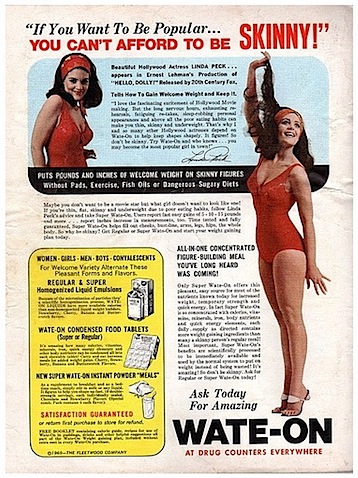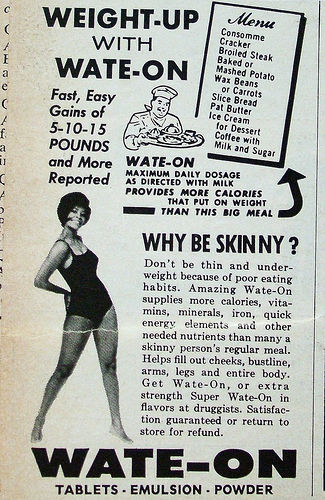By Courtnay Veazey

It’s been seven years since I’ve consistently taken ballet classes, yet I still identify myself as a dancer, a bunhead, a ballerina, a terpsichorean, a lover of movement. However, this identification has lost its influence as other aspects of my post-performing identity have matured and blossomed. Identifying yourself as a dancer has its pros and cons. Pros include an intimate connection with your body, an automatic link to a tight-knit community, a spirit of intense dedication, and the joys of performing. Cons usually occur during times of transition, such as injury, realizing that you will not become a professional dancer, or retirement. All of those transitions deal with a loss, and as with any other loss in your life, you will grieve and feel heartbroken. To illustrate these powerful emotions of loss and grief felt by transitioning dancers, Kevin McKenzie, the artistic director for the American Ballet Theatre, said, “The retiring dancer and heartbroken lover are never more alike than when their relationships end” (Jeffri, 2005, p. 341).
I felt lost, confused, and grieved my senior year of high school when I realized that I would no longer be spending at least 15 hours a week in the ballet studio – my haven. I cried throughout my entire warm-up class before my final performance with the Ballet Memphis Junior Company. I knew that part of my identity was dying, but I chose to recognize that this loss would leave room for growth and new opportunities in my life. Ironically, the work ethic and dedication I learned from ballet would help me overcome the loss of ballet as my predominant self-identifier.
One of the most difficult times of transition a professional dancer will face is retirement – especially since it usually occurs at a young age. Most dancers end their careers before the age of 40. According to Pickman (1987), dancers “face retirement from dance with little knowledge or formal preparation for other careers” (p. 200). Along with lack of preparation regarding their transition, retiring dancers experience strong emotions, such as anger, frustration, depression, fear, and grief (Doerr, 1995; Jeffri, 2005; Pickman, 1987; van Staden, Myburgh, & Poggenpoel, 2009). An international survey conducted in 2000 by Columbia University’s Research Center for Arts and Culture confirmed “the common notion that the end of a career in dance is ‘one of life’s little deaths’ that dancers often say they must mourn the loss of before they can continue in another career” (Jeffri, 2005, p. 346). This same survey also confirmed that dancers feel more satisfied in their post-retirement careers if they fully prepare themselves for retirement compared to those dancers who do not prepare themselves (Jeffri, 2005).
South African researchers conducted semi-structured interviews with professional ballet dancers and discovered that retiring dancers usually do not view retirement as a growth opportunity (van Staden et al., 2009). They become intimately connected with the grief aspect of this transition and the fear that normally comes with a change and forget about the growth aspect and the talents and skills they have to offer. Also, upon retirement, dancers experience exclusion and self-doubt as a result of finding “themselves in competition with other ‘normal’ people, who are usually in the middle of their careers or even picking up the results of an already established career” (Roncaglia, 2006, p. 184; Drahota & Eitzen, 1995).
Feelings of being unprepared and feelings of anger, frustration, depression, fear, grief, loneliness, and self-doubt can be overcome by processing those emotions with a mentor and/or a counselor. Thankfully, the dance community recognizes this need for support and encouragement, and a wonderful organization exists specifically for dancers facing career transitions. This organization is Career Transition for Dancers. http://www.careertransition.org/Programs/
Dancers experience intense emotions when processing retirement because they tend to sacrifice personal development (Roncaglia, 2006), which leads to weakened self-identities (van Staden et al., 2009). In other words, dancers forfeit time with friends, family, and educational institutions (i.e. high school and/or college) to solely focus on dance, which in reality is only a small part of their identities. Yes, dance is an important aspect of their lives, but due to intense training, rehearsing, touring, and performance schedules, dancers sometimes forget to develop other aspects of their identities. This intense focus on only one aspect of their lives leads to much more intense loss when retirement occurs.
So, pre-professional and professional dancers, take time to focus on the other parts of who you are. Take a night class at a local or online university. Become involved with different volunteer efforts. Develop hobbies, such as photography, reading, writing, etc. Most importantly, while you’re taking time to focus on these other aspects of your identity, realize that everything you engage in is purposeful and ultimately preparing you in some way for a life off the stage. Some of you younger dancers may be participating in intense training and therefore do not have time to engage in other activities. That’s okay. Just be sure to make an effort to recognize your interests outside the dance realm. The mere knowledge that you have an interest in other things is just as important because those interests could become a secondary career choice in the future. Also, by being able to recognize your other interests now, then you will not be left offstage asking “Well, what else do I like? What do I do now?”
Here are a few activities that you can do pre-retirement to help you prepare for and successfully manage the emotional turmoil that can stem from this transition – whether that transition is next year or ten years from now.
1. Know what stage you’re experiencing. Drahota & Eitzen (1998) modified Ebaugh’s (1988) role exit theory to make it applicable for professional athletes. I believe their modification is also applicable to professional dancers.
Pre-Stage 1 – Original Doubts: You realize before becoming a professional dancer that this career (or role) would be temporary due to injury, the aging process, and intense competition. Therefore, you plan for another career before becoming a professional dancer. (If you experience this stage, then you typically experience a smoother transition post-retirement and enter directly into Stage 2.)
Stage 1 – First Doubts: You begin to doubt your commitment to being a professional dancer by realizing this role will not last forever. This questioning can occur as a result of burnout, injury, layoff, illness, or company restructuring.
Stage 2 – Seeking Alternatives: You begin looking for and consider alternatives to your current role as a professional dancer.
Stage 3 – The Turning Point: You make a voluntary or involuntary decision to exit your role as a professional dancer. Involuntary decisions occur because of layoffs, career-ending injuries, or illnesses. Also, during this stage, you announce your decision to leave your role and assemble the emotional and social support you need to act on that decision.
Stage 4 – Creating the Ex-Role: You learn how to be you without the role of dancer prominently attached and begin learning how to incorporate your past identity into your present and future identity. This stage is an intense process and takes time. (I’m still learning how to incorporate my identity as a ballerina into my present life.)
Consider the following questions regarding your current stage: How does it feel to be in that stage? What questions do have about the other stages? What do you see yourself doing to successfully move into the next stage? What’s preventing you from doing those things? What emotions do you feel when you think about moving to the next stage?
2. Explore your self-identity through a freewriting activity. For ten minutes, write whatever comes into your mind about your self-identity. Don’t stop to critique what you write. Just keep writing as much as you can get down. If you get stuck, keep writing – write ‘I’m stuck,’ or ‘I don’t know what else to write.’ Most importantly, keep your pen moving. After ten minutes, read through what you said. What did you learn about yourself? What are you missing? How will you fulfill those missing components? What are your strengths? How can you use those strengths in areas outside of dance?
3. Create a collage that reflects how you presently feel about retirement and how retirement makes you view yourself. After creating the collage and recognizing some of the emotions present in it, say out loud to yourself, “I will not allow retirement to make me feel _____.” Fill in the blank with anything (i.e. lonely, ugly, unimportant, sad).
4. Complete the following statement: “If I hadn’t become a dancer, I would have _____.” Explore that variety of interests that you use to fill in that blank via a part-time job, volunteering, or an educational outlet.
5. Research the multitude of resources at Career Transition for Dancers – http://www.careertransition.org/OnlineResources/TransitionLinks/ – based upon the area in which you’re lacking information, such as career counseling, resume writing, dance education resources, college guides, performing arts unions, etc.
6. Share what you learn with someone – either a fellow dancer or a trusted friend. You are not alone in this process.
References
Doerr, D. C. (1995). Coping with the emotions of job transition: A model for presentation to
clients. Journal of Career Development, 22(2), 101-107. doi:10.1007/BF02247460
Drahota, J. A. T., & Eitzen, D. S. (1998). The role exit of professional athletes. Sociology of
Sport Journal, 15(3), 263-278. Retrieved from SocINDEX with Full Text database.
Ebaugh, H. R. F. (1988). Becoming an ex: The process of role exit. Chicago: University of
Chicago Press.
Jeffri, J. (2005). After the ball is over. International Journal of Cultural Policy, 11(3), 341-355.
doi:10.1080/10286630500411499
Pickman, A. J. (1987). Career transitions for dancers: A counselor’s perspective. Journal of
Counseling & Development, 66(4), 200-201. Retrieved from SocINDEX with Full Text database.
Roncaglia, I. (2006). Retirement as a career transition in ballet dancers. International Journal
for Educational and Vocational Guidance, 6, 181-193. doi:10.1007/s10775-006-9106-0
van Staden, A., Myburgh, C. P. H., & Poggenpoel, M. (2009). A psycho-educational model to
enhance the self-development and mental health of classical dancers. Journal of Dance Medicine & Science, 13(1), 20-28. Retrieved from International Bibliography of Theatre & Dance with Full Text database.














